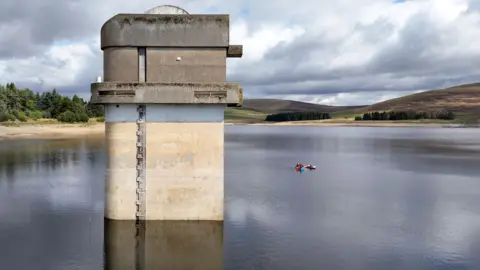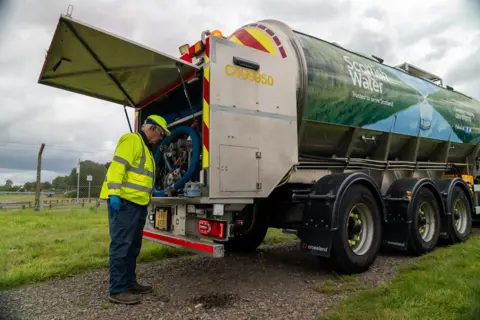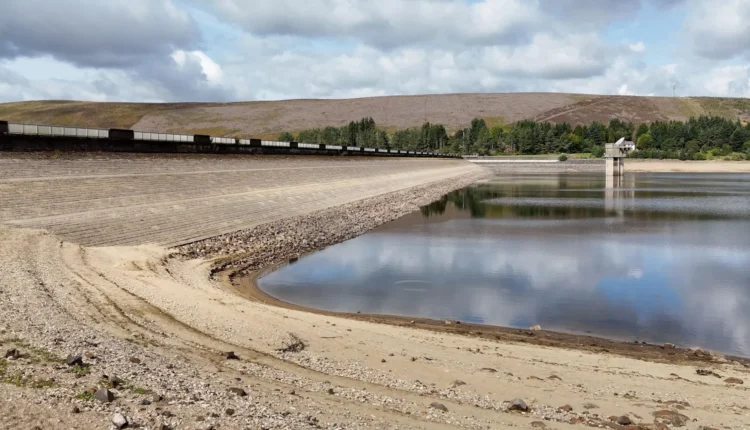Rivers at critical level as Scotland’s water supplies feel the strain
Scotland is well-known for its heavy rainfall, and it is known as a lush, green, soggy country.
Not this year. Water levels are significantly lower than average following the driest spring since 1964 and a hot summer.
The problem is particularly acute in the east of the country, where the Scottish Environment Protection Agency (Sepa) is currently imposing restrictions on some water use.
It reported that two catchment areas, Ythan in Aberdeenshire and North Fife, had reached significant scarcity, the highest level of alert. This indicates that the rivers have reached a critical level after being extremely low for 30 days or more.

Restrictions will be imposed in the coming days to limit the removal of water from the natural environment surrounding the two rivers for industrial and agricultural purposes, a process known as abstraction.
According to Sepa, unless there is a period of consistent rainfall, other areas, such as the Deveron and Don in Aberdeenshire, may experience significant scarcity in the coming days.
However, the impact of ex-Hurricane Erin’s remnants, which are expected to bring wetter weather later this week, remains uncertain.
Sepa stated that the restrictions come after “months of worsening conditions,” with each month of 2025 being drier than average on Scotland’s east coast.
Scotland hasn’t had a hosepipe ban since 1995, and there are no plans to implement one. However, supplies are strained.
Backwater Reservoir in Glenisla, Angus, is less than half full and is located twenty miles north of Dundee.

Along with the nearby Loch of Lintrathen, the reservoir provides drinking water to 300,000 people in Scotland’s fourth largest city and surrounding area. It’s concerning, admits Brian McCarthy, economic demand manager at Scottish Water, the publicly owned utility.
“If this extended dry period continues towards the autumn and winter, then that will be concerning for supplies going into next year and beyond,” according to him. And Backwater is draining at an increasing rate.
As the country basked in late-summer sunshine in August, demand for water increased by 100 million litres per day, from 1,850 million litres to 1,950 million litres.
In response, Scottish Water is thinking about putting up a temporary network of pipes and pumps to move water into the reservoir from the nearby River Isla.
That would necessitate Sepa’s approval, which would take into account the environmental impact of any such plan.

Below Backwater, at the foot of the Angus glens, is the small town of Kirriemuir, best known as the birthplace of JM Barrie, the creator of Peter Pan.
Last week, the underground tank that stores the town’s water supply from Backwater and Lintrathen ran low and had to be replenished by tanker.
The vehicle was one of 25 Scottish Water lorries that have been on the move in recent weeks, transporting supplies across the country.
Frequently, this entails transporting water from the most robust sources in Scotland’s west, which is typically wetter, to the east.
According to the most recent Scottish Water figures, average reservoir levels in eastern Scotland were 56% last week. Typically, at this time of year, the figure is 81%. Levels in the west were at 70%, down from the late summer average of 82%.
According to the Met Office, the coasts of East Lothian, Fife, and the Moray Firth receive less than 700mm of rainfall on average per year, while the western Scottish Highlands receive more than 4,000mm.
Mr McCarthy believes that in the coming years, this will become an even more pressing issue.
“Our long-term projections show that the population will increase towards the east of the country,” he further elaborates.
Part of the problem, he adds, is Scotland’s relationship with rain, and the belief that with over 30,000 freshwater lochs, water must be plentiful.
This, according to Dr Rebecca Wade, senior lecturer in environmental science at Abertay University in Dundee, is simply not the case.
“Our climate is changing which means that sometimes we have a lot less water than we’re used to having,” she tells me. “Also, when we do get rain, it follows a different pattern.
“So we might get a very intense short storm, which could cause localised flooding, but it doesn’t solve the drought problems because it doesn’t recharge the groundwater. “It is not filling the reservoirs.”
Read more on Straightwinfortoday.com


Comments are closed, but trackbacks and pingbacks are open.